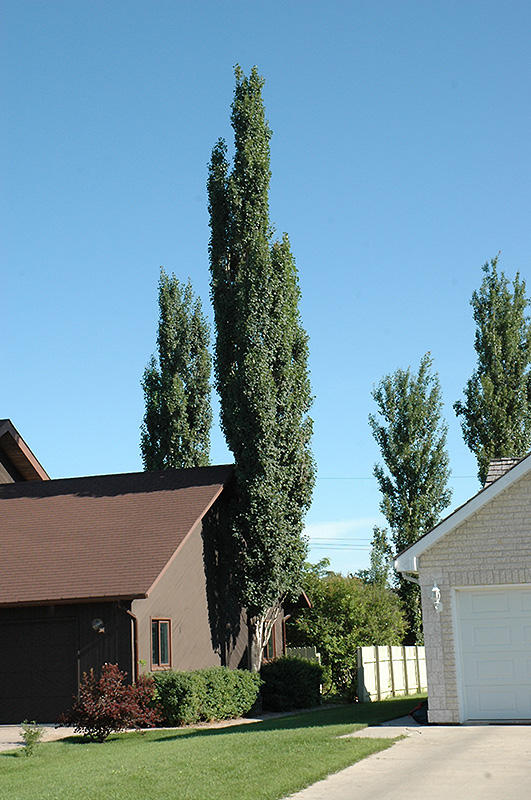Digging deeperPlant Library
Columnar Swedish Aspen
Populus tremula 'Erecta'
Height: 40 feet
Spread: 6 feet
Sunlight:
![]()
![]()
Hardiness Zone: 4
Other Names: European Aspen
Description:
A tall upright spire-like tree, used primarily as a sharp vertical accent or in a row as a very tall screen; fast growing, far more disease resistant than the standard Lombardy poplar; bold and formal in a landscape setting, effective when well used
Ornamental Features
Columnar Swedish Aspen is primarily valued in the landscape for its rigidly columnar form. It has forest green deciduous foliage. The serrated oval leaves turn yellow in fall. The furrowed gray bark adds an interesting dimension to the landscape.
Landscape Attributes
Columnar Swedish Aspen is a deciduous tree with a strong central leader and a narrowly upright and columnar growth habit. Its average texture blends into the landscape, but can be balanced by one or two finer or coarser trees or shrubs for an effective composition.
This tree will require occasional maintenance and upkeep, and usually looks its best without pruning, although it will tolerate pruning. It is a good choice for attracting birds to your yard. Gardeners should be aware of the following characteristic(s) that may warrant special consideration;
- Suckering
Columnar Swedish Aspen is recommended for the following landscape applications;
- Vertical Accent
- Hedges/Screening
Planting & Growing
Columnar Swedish Aspen will grow to be about 40 feet tall at maturity, with a spread of 6 feet. It has a low canopy with a typical clearance of 5 feet from the ground, and should not be planted underneath power lines. It grows at a fast rate, and under ideal conditions can be expected to live for approximately 30 years.
This tree does best in full sun to partial shade. It prefers to grow in moist to wet soil, and will even tolerate some standing water. It is not particular as to soil type or pH. It is somewhat tolerant of urban pollution. Consider applying a thick mulch around the root zone in winter to protect it in exposed locations or colder microclimates. This is a selected variety of a species not originally from North America.
A NetPS Plant Finder tool
This Plant Library is for informational purposes only. We may or may not carry the items listed. During many times of the year, we may carry many more plants in our store than are listed in the Plant Library. Please contact us directly at 303-690-4722 or visit our store for current availability and for assistance.
